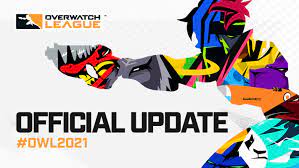People Analytics Enters Esports

NFL? MLB? March Madness? OWL!!!
Remember when the word “game” in the phrase “watching a game” meant a game of football, basketball, baseball, or if you are not in the United States, soccer? Well, not anymore. Now, there are new and hip leagues of video games. Smirk with skepticism all you want, but the Overwatch League is not playing games — pun intended. It is serious in its pursuit of an audience as large as conventional sports leagues.
Since its 2018 debut, the Overwatch League has been building a large audience for its competition of teams playing Blizzard Entertainment’s video game Overwatch. The final match of the inaugural League in 2018, for example, was watched by more than 10 million viewers worldwide. Since then, the League gained prominence, and is now covered way beyond niche media platforms. None other than Washington Post wrote about the League as recently as in 2020.
With the 2021 Overwatch League (OWL) just around the corner, Forbes published an article announcing the League’s newest venture to create its teams’ Power Rankings. And to do that, the OWL is partnering up with IBM Watson itself. The Power Rankings will be fully data driven. In this new manifestation of the now proverbial Moneyball, the teams participating in the OWL will be ranked by weighing up to 360 different stats, and by creating AI models to determine the most impactful indicators of team success.
According to the article, IBM Watson used the data from the 2020 League to test its analytical models and figured out about 30 stats which had the strongest correlation with the team’s success. With its vast computing power, IBM Watson will be able to crunch a vast amount of data to produce weekly Power Rankings in this year’s matches.
The article notes the People Analytics entering a new field where people will be analyzed for their performance, not just individually, but also as teams. In addition to giving the OWL a new publicity boost, this new collaboration can also serve as a testing ground for collecting data on how team interaction correlates with team success. The powerful AI models can generate insights that can be transferrable beyond the video game industry. Teleworking becoming the new norm due to the COVID-19 pandemic, virtual interactions of teams in corporate environments will keep growing. Virtual interactions generate more data, readily digitized, at fingertips of People Analytics teams at companies.
My main concern with the theme of the article is that the emphasis is more on the new technology and less on the human beings. Unfortunately, the article has little to say about the actual players whose performance is being measured for the Power Rankings. It feels like the teams and individual players in these Power Rankings are video game characters themselves, not human beings.
The fact is that real people are sitting at their computer screens and “working” to make the OWL happen. By joining the League, they became e-athletes, who get paid for playing, i.e., working. The term “video game” diminishes these players’ contributions to the success of the OWL. Researching this further, I learned that the OWL players face challenges similar to athletes in conventional sports leagues. These issues have been affecting the league’s reputation, and can potentially hurt the entire enterprise. The Overwatch League is responsible for the players who are the essential part of its surging popularity.
I wish even more progress to the Overwatch League. What I would like to see though is that this progress is well-rounded. Riding the publicity fame for using Artificial Intelligence or Machine Learning will only get the League so far. An important fact to remember about People Analytics is that there will be nothing to analyze without the very people who are committed to contribute to the work.



Thanks for an interesting article! I really like your point about emphasis being put so much on technology and not on people. This is a critical concern not only for the OWL but also for everyone who is interested in going into people analytics. I wonder how the OWL explained this initiative to the players and how the players reacted to this initiative. From my point of view, there is no benefit to the individual players because they are not evaluated on their individual potentials and the evaluation will not lead them to be scouted by other powerful teams. So, I was not sure what exactly was the purpose of ranking teams with AI as teams are ranked anyways when they play games. Maybe I am not fully understanding the whole thing but just wondering how the AI can benefit the OWL as a whole.
Amazing commentary to read, thanks for sharing these! Not only was it fascinating to see the e-sports leveraging people analytics both for the individual level and teams, but also the concerns about the article’s lack of focus in human beings is absolutely critical.
I thought that this IBM project is going to benefit the players to make a fair evaluation of their performance with transparency than counting on just the scores or people’s judgements. Completely agreed that the payment issue or ethics need to be prioritized much more than this scoring system. Really hope that more established employment structure is created to protect these players like in the other sports industries as soon as possible.
I really enjoyed reading this Tuychi, and you certainly grabbed my attention with the pun. What I realized as I was reading your blog is that I have a bias with how AI is used in sports – in this case e-sports – to how AI is used in businesses or other institutions. Does it really matter how AI is used in sports or e-sports? I haven’t come up with a conclusion yet, but as it stands I’m more curious to learn if there are any biases in how individual and team performance is measured compared to how it’s done in business.